Today, it seems unthinkable, but in the 1950s, car purchases were restricted in Hungary. Individuals could only buy a used car without a permit from 1958, and then in 1959 they were allowed to buy new vehicles; true, they sometimes had to wait for years for a new car. In the next decade, more and more cars appeared on domestic roads, and the domestic car fleet increased tenfold in a decade.
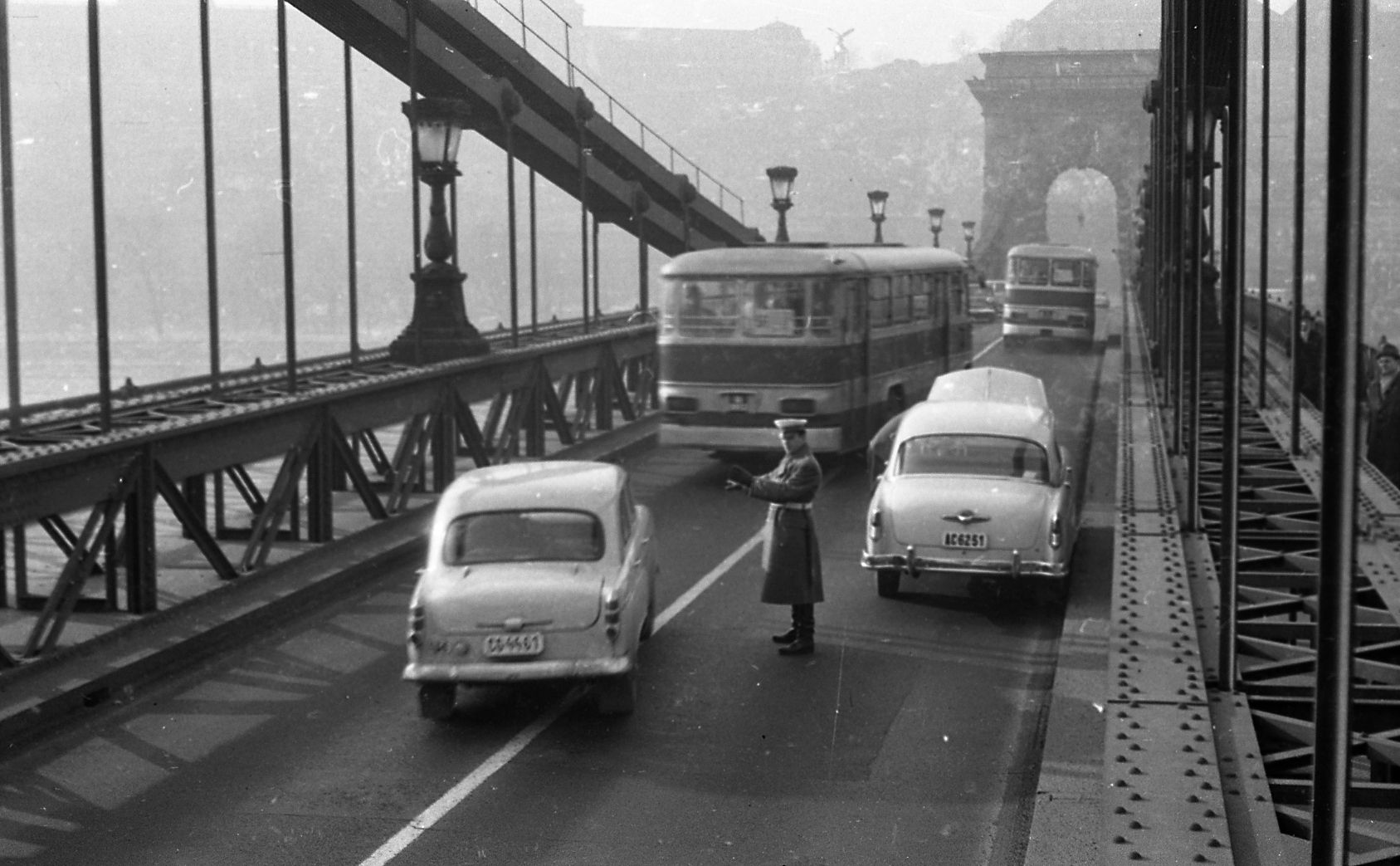 In the 1960s, more and more cars appeared on the roads of Budapest; the picture was taken in 1967 on the Chain Bridge (Source: Fortepan / Magyar Rendőr)
In the 1960s, more and more cars appeared on the roads of Budapest; the picture was taken in 1967 on the Chain Bridge (Source: Fortepan / Magyar Rendőr)
However, the domestic road system found it difficult to cope with the ever-increasing traffic. Experts in transport development have formulated ambitious ideas: they have proposed the construction of a highway network, the center of which would, of course, have been the capital. The Hungária Boulevard, which was not built widely enough at the time, was seen as the most suitable for connecting the future motorways.
If the idea were to be realized, a high-lane highway to the Danube would have been built on today's Hamzsabégi Road, where traffic would have been diverted over a bridge on a highway overpass on Hungária Boulevard. The other highways would have started from here. For urban developers, Paris was the example, where the Périphérique, a mostly high-lined multi-lane ring road, was built at a roughly similar distance from the city center.
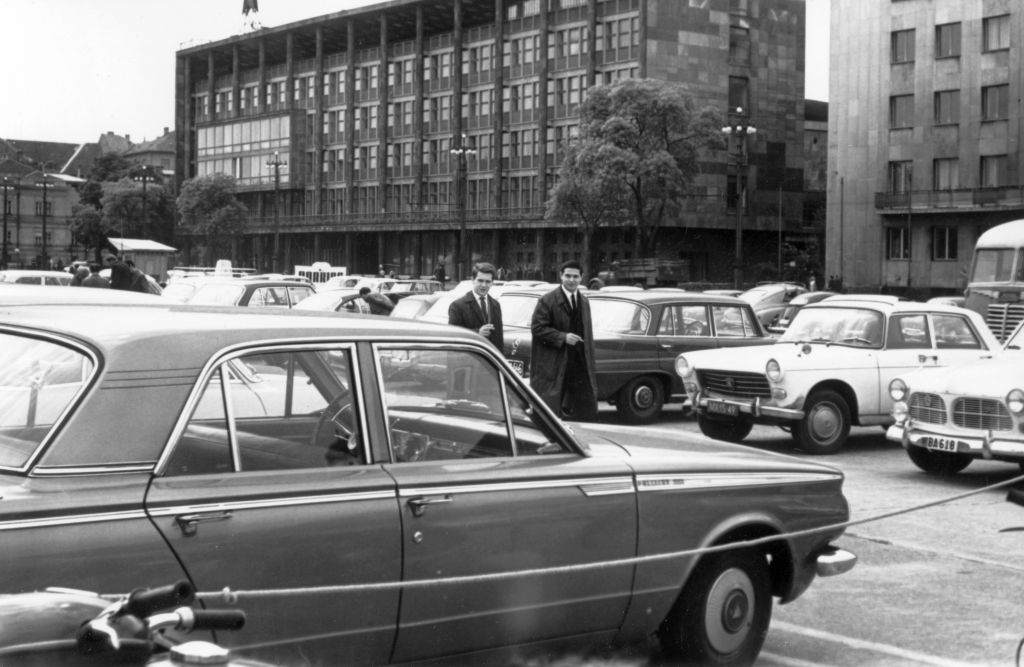 Parking cars on Dózsa György Road in 1967. The domestic road system found it difficult to cope with the constantly growing traffic (Source: Fortepan / No.: 25604)
Parking cars on Dózsa György Road in 1967. The domestic road system found it difficult to cope with the constantly growing traffic (Source: Fortepan / No.: 25604)
Construction of highways began in the 1960s, and the time was seen in 1971 for a call for tenders for the design of a new southern highway bridge, the location of which was envisaged next to the Southern connecting railway bridge.
Hungarian design companies were invited to the tender: the UVATERV, the Budapest Civil Engineering Design Company, the Budapest University of Technology, the Budapest Urban Planning Company and the Transport Science Association. The Magyar Nemzet announced the tender on 23 September 1971:
“The bridge construction will be carried out in two phases. For the time being, plans for the implementation of the first phase need to be prepared. Road traffic junctions should be designed, the two construction phases of which can be developed from each other, correspond to the long-term ideas and fit into the given environment from the point of view of the cityscape. The Danube Bridge will have twice two road lanes in the first phase and twice four in the second phase, and a four-track, three-meter-wide pedestrian and two-track bicycle road will be provided in both phases. The new Danube Bridge can also be made with a two-storey design. ”
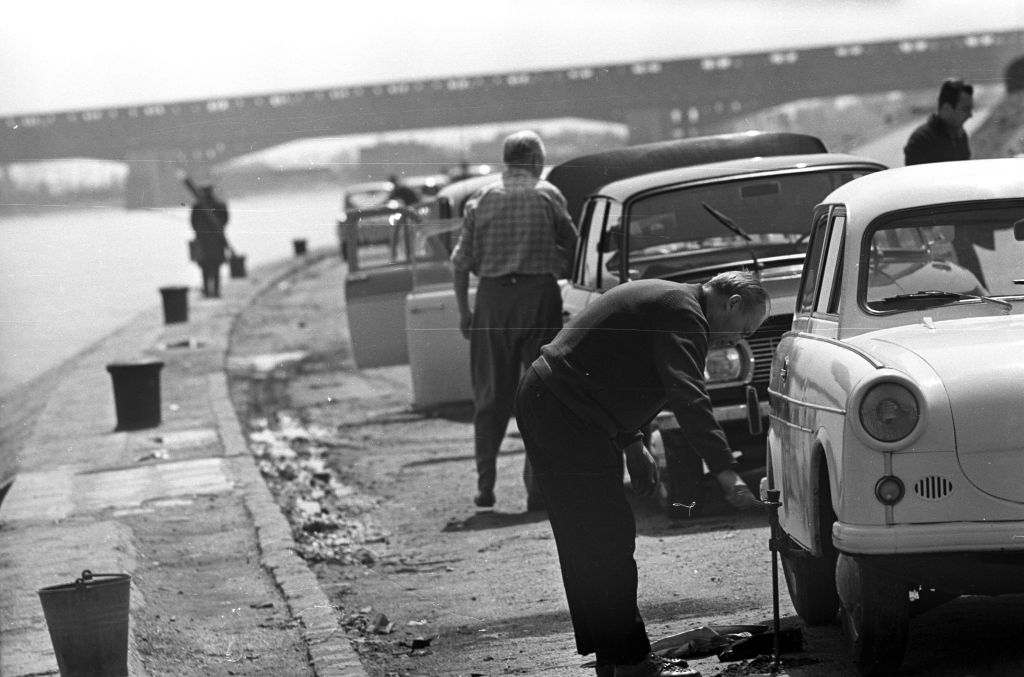 The lower embankment of Buda at today's Pázmány Péter Promenade, in the background the Connecting Railway Bridge in 1970 (Source: Fortepan / No.: 193052)
The lower embankment of Buda at today's Pázmány Péter Promenade, in the background the Connecting Railway Bridge in 1970 (Source: Fortepan / No.: 193052)
The tenderers saw two possibilities for the bridge to fit into the cityscape and its surroundings, i.e. the rugged iron structure of the railway bridge behind the planned bridge. One possible solution named in the tender was to build a bridge similar to this lattice structure, while the other was for the new bridge to cover the railway bridge almost completely. Designers had to submit applications by April 1972. The companies already mentioned applied for several plans, so a total of 11 applications were received, which were presented on 15 May 1972.
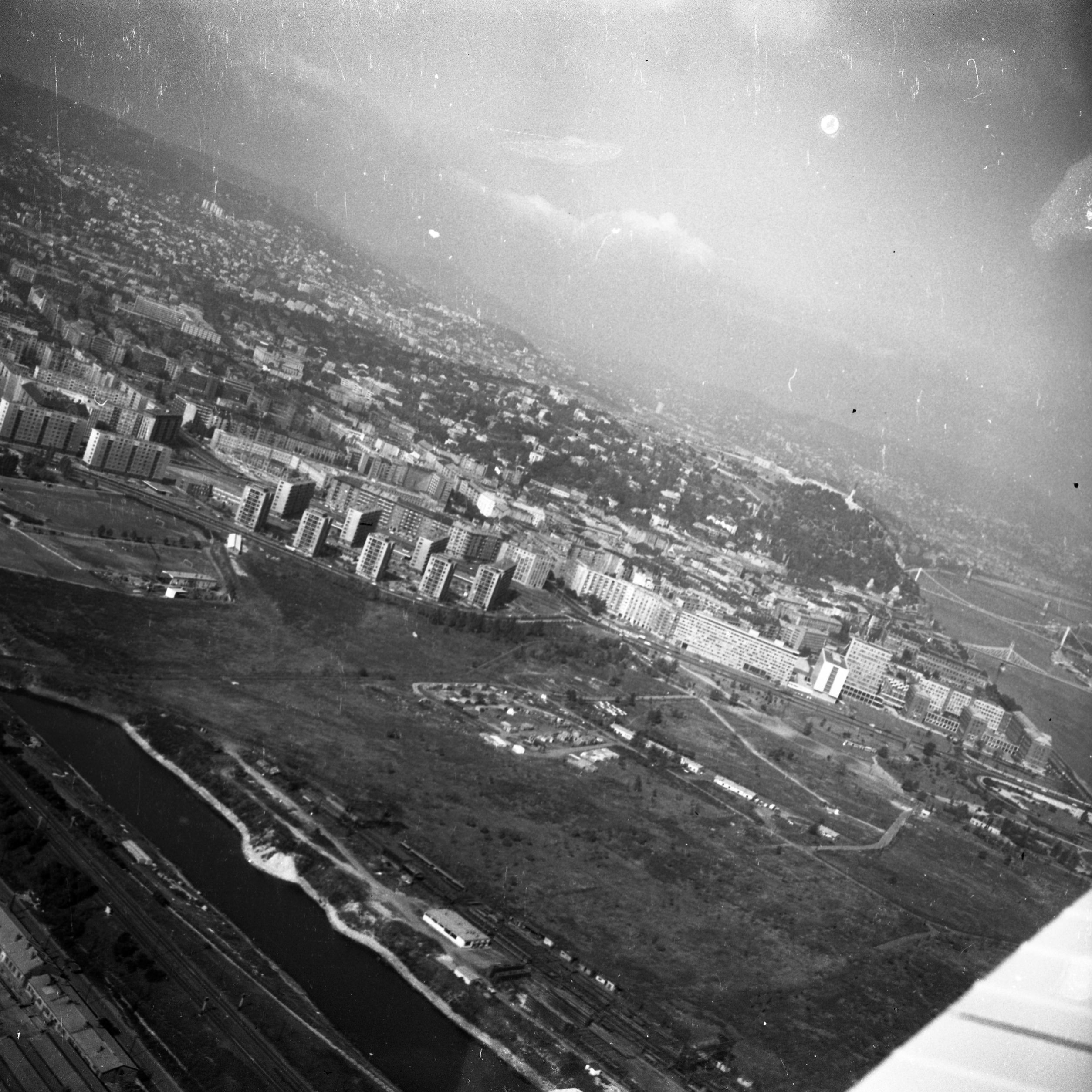 Aerial photo of Lágymányos in 1970; the motorway bridge was planned for the area (Source: Fortepan / No.: 87263)
Aerial photo of Lágymányos in 1970; the motorway bridge was planned for the area (Source: Fortepan / No.: 87263)
The winner was a plan drawn up on paper by a team of the Budapest Urban Planning Company. The opening layout of the huge, six-span concrete bridge matched that of the railway bridge, meaning that each span was nearly 100 meters long. Behind the gigantic mass of concrete - according to the visual plans - the railway bridge would have been “lost”. According to the plans, it would have been built in half-width in the first phase, in only two lanes per direction, and then this could have been further widened. Perhaps the idea of a huge concrete bridge can be repulsive to many, we find many beautifully executed concrete structures in the world; according to the drawings, this bridge would also have joined this line.
However, in 1973, in the 6 March 1973 issue of the Autó-Motor magazine, this bridge was no longer presented as to be built, but another, which was also submitted to the tender by the FŐMTERV, but was not awarded there. The idea of the FŐMTERV was a lattice bridge, which in its final design would have led traffic on two levels.
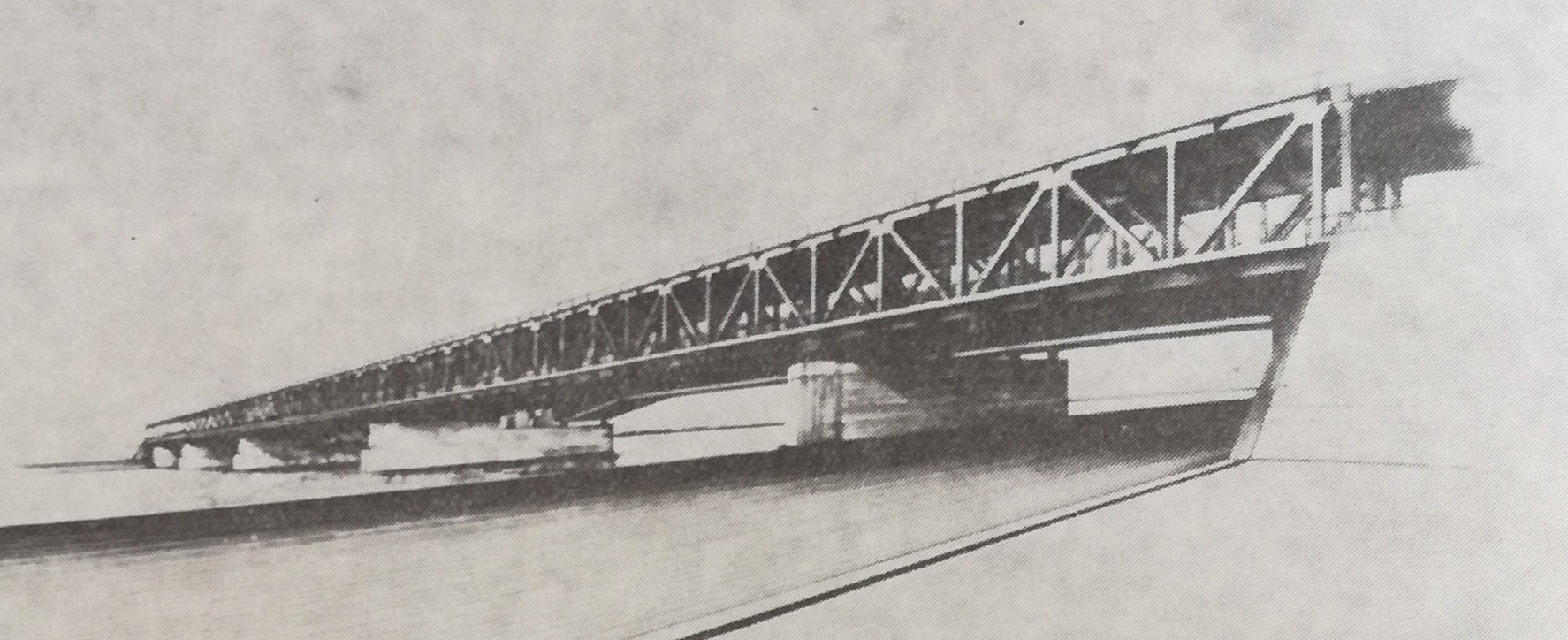
One of the plans for the southern highway bridge: the idea of the FŐMTERV was a lattice bridge, which in its final design would have led traffic on two levels (Source: Városi Közlekedés 1972/4)
If any of the plans had been realized, today Budapest would actually be a much smaller, more closed city, as Hungária Boulevard would be surrounded by a modern castle wall: the parts of the city outside the Hungária Ring Road would be separated from the inner parts by a multi-lane, two-storey motorway. The huge traffic that now passes not only on Hungária Boulevard, but on the M0 motorway would all appear in this lane. In today's eyes, the idea born in the 1970s would have made a significant part of Budapest uninhabitable.
Not only would air pollution be huge - in the surrounding neighbourhoods far above tolerable - but think about how many trucks and cars would form a permanent “wall” on this trail.
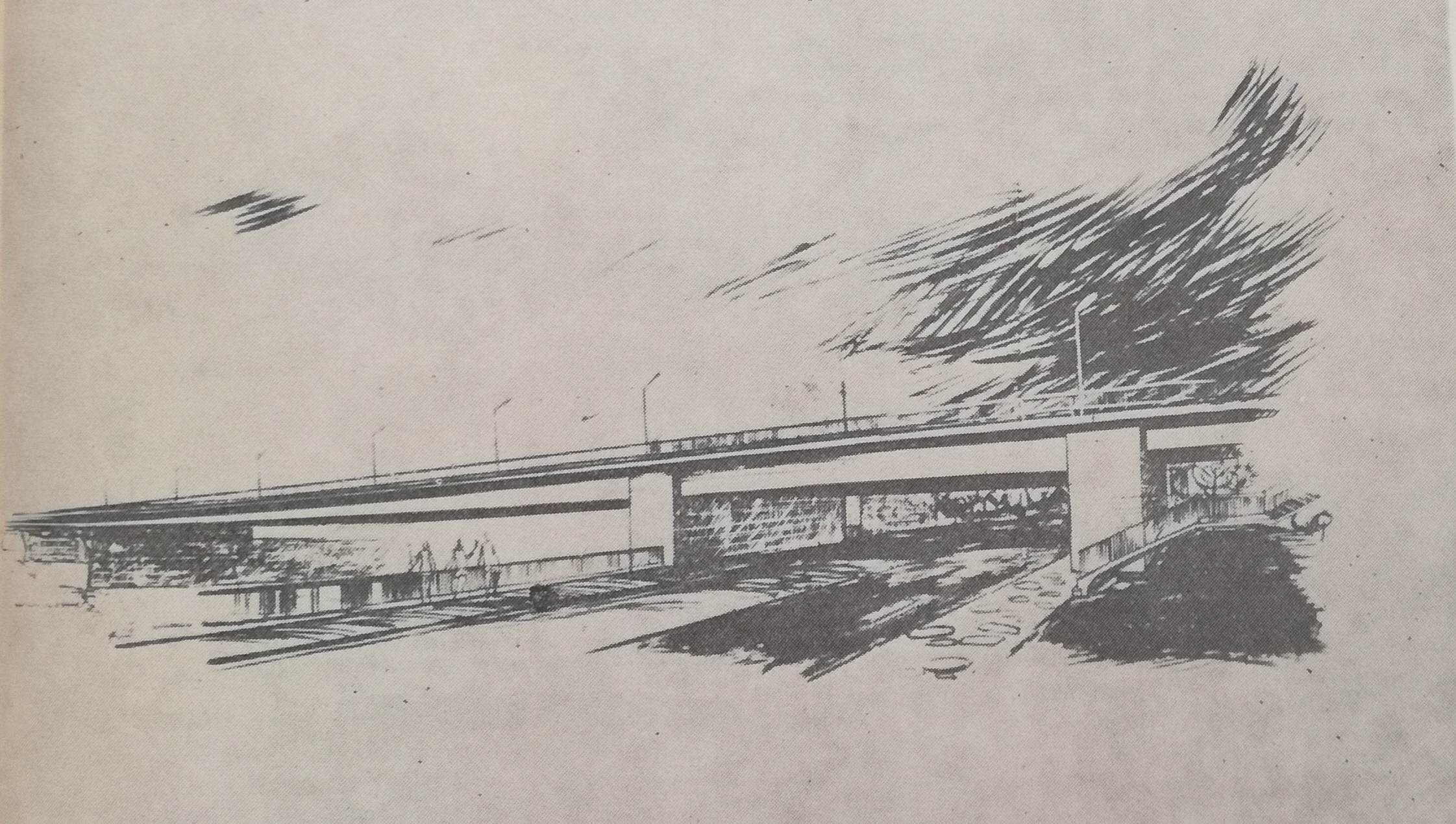 Another idea for the bridge: a six-span steel bridge design from BME designers (Source: Városi Közlekedés 1972/4)
Another idea for the bridge: a six-span steel bridge design from BME designers (Source: Városi Közlekedés 1972/4)
A highway requires a number of specific infrastructures; truck rest stops, gas stations, motels serve travellers. Had the plan for an inner highway ring been realized, such and similar facilities would not be outside the city but on the outskirts of the inner city. Although the example of Paris hovered before the eyes of the designers, the French capital is bypassed by many other motorways, not just the Périphérique.
Fortunately, in the second half of the 1970s, another idea came to the fore, the construction of the M0 ring road farther from the city, so the plan for the huge, two-story bridge was also discarded. Twenty-four years after the design tender was announced, a bridge was actually handed over where the highway bridge was envisioned at the time. This is the Rákóczi Bridge , which is fundamentally different from what was imagined here in 1971.
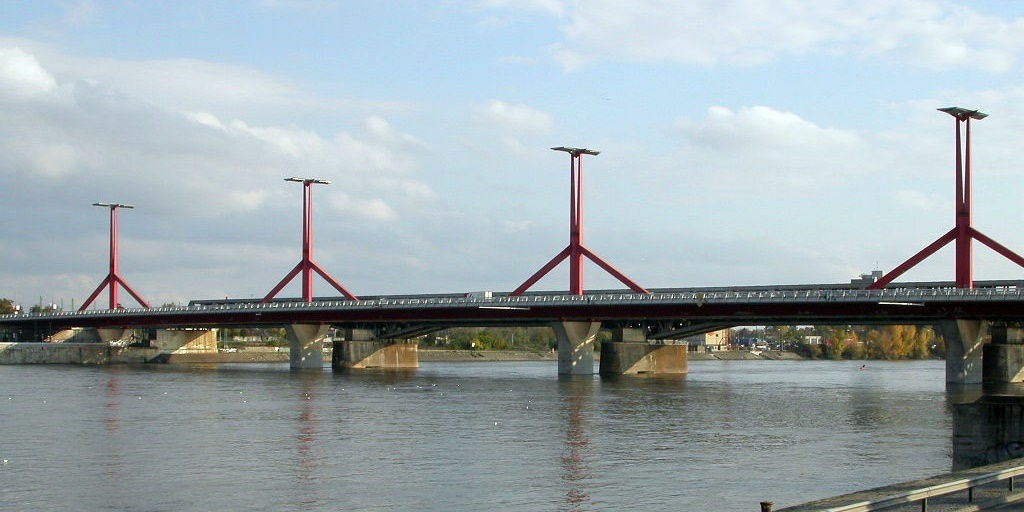 Instead of the multi-storey motorway bridge, the Lágymányosi Bridge was built, which was renamed Rákóczi Bridge ten years ago, in 2011, on the 300th anniversary of the Peace Treaty of Szatmár [Satu Mare today] (Photo: photo taken by the author).
Instead of the multi-storey motorway bridge, the Lágymányosi Bridge was built, which was renamed Rákóczi Bridge ten years ago, in 2011, on the 300th anniversary of the Peace Treaty of Szatmár [Satu Mare today] (Photo: photo taken by the author).
Cover photo: Winning plan for the competition announced in 1971; the Budapest Urban Planning Company envisioned a huge, six-span concrete bridge over the Danube (Source: Városi Közlekedés 1972/4)

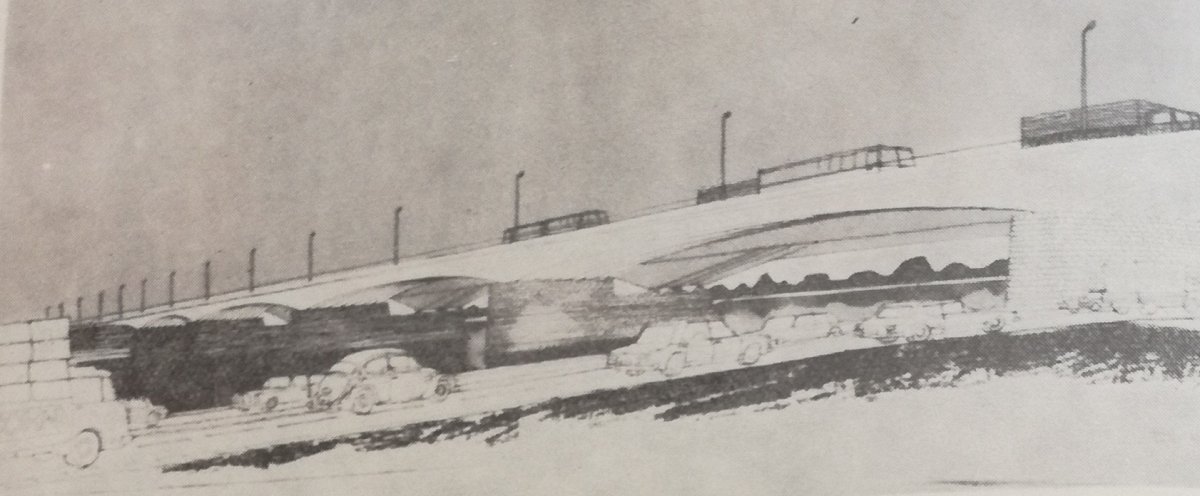


































Hozzászólások
Log in or register to comment!
Login Registration